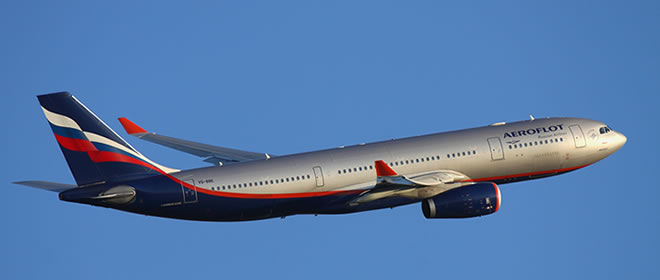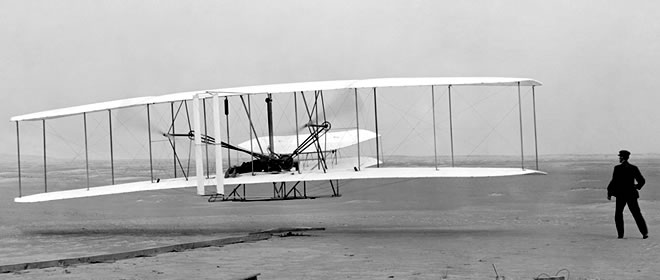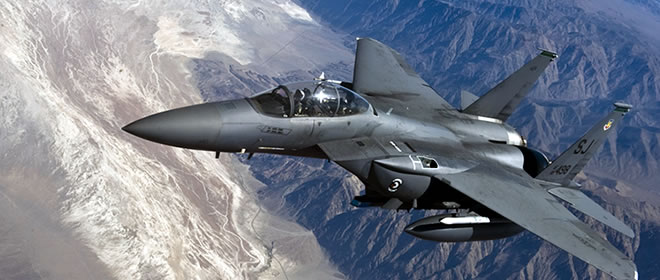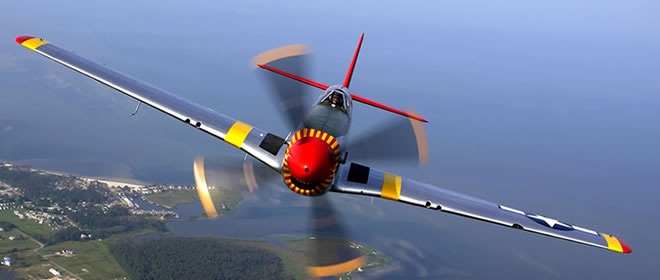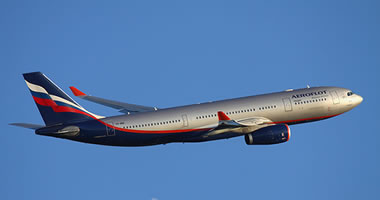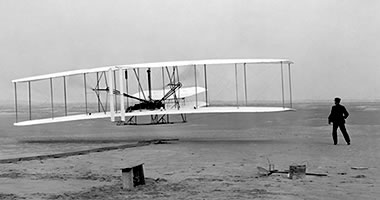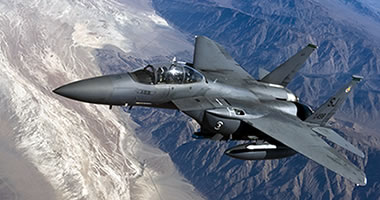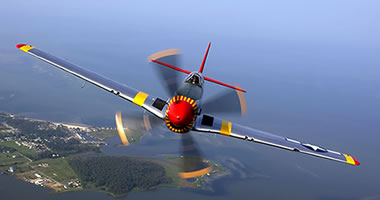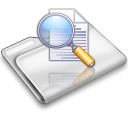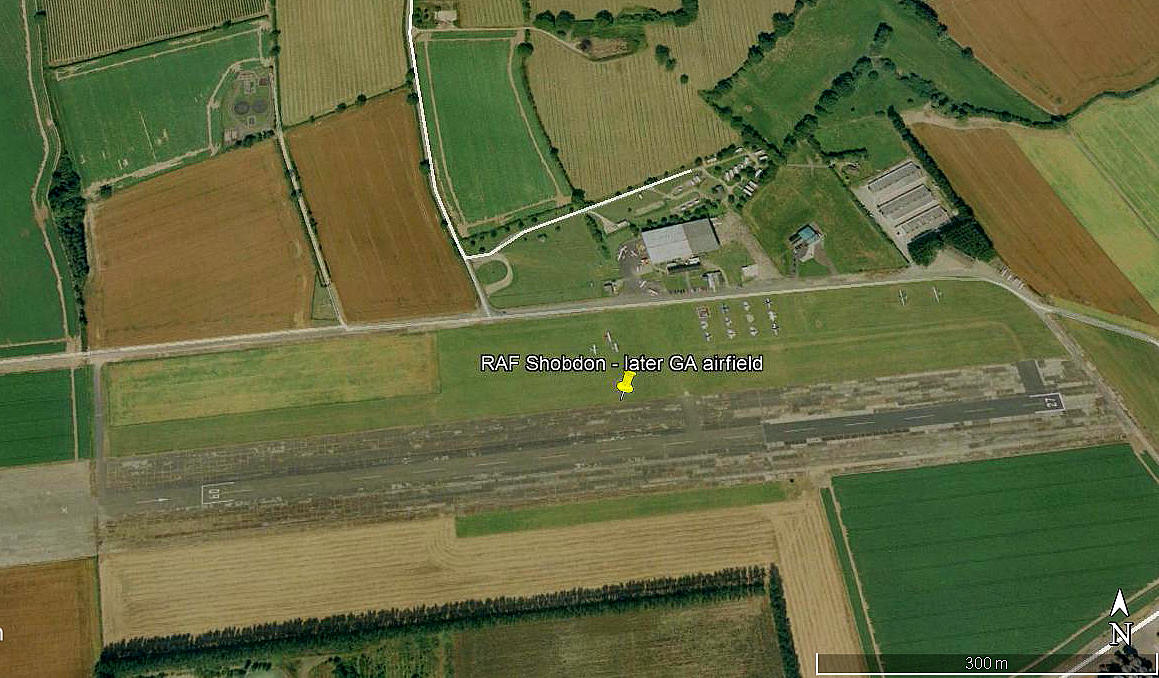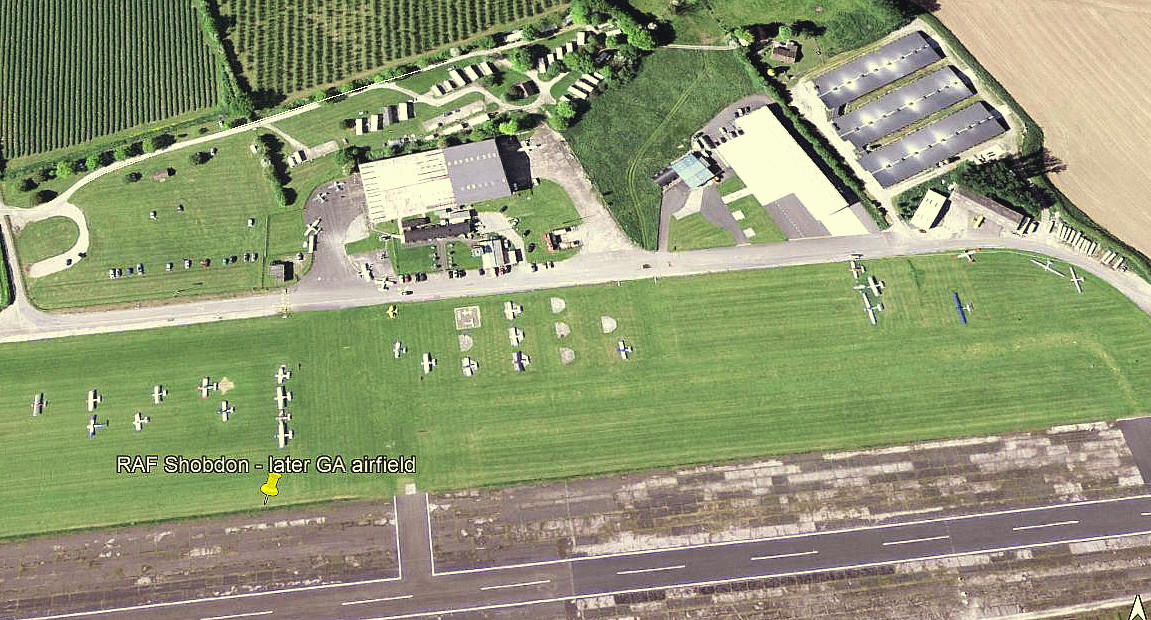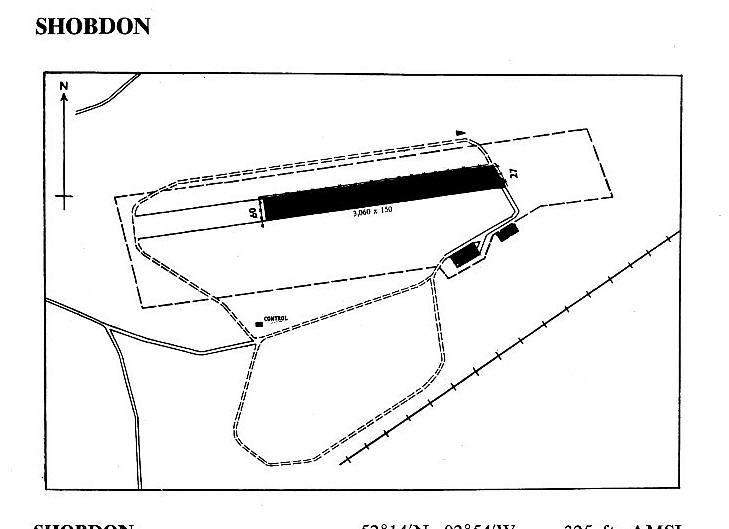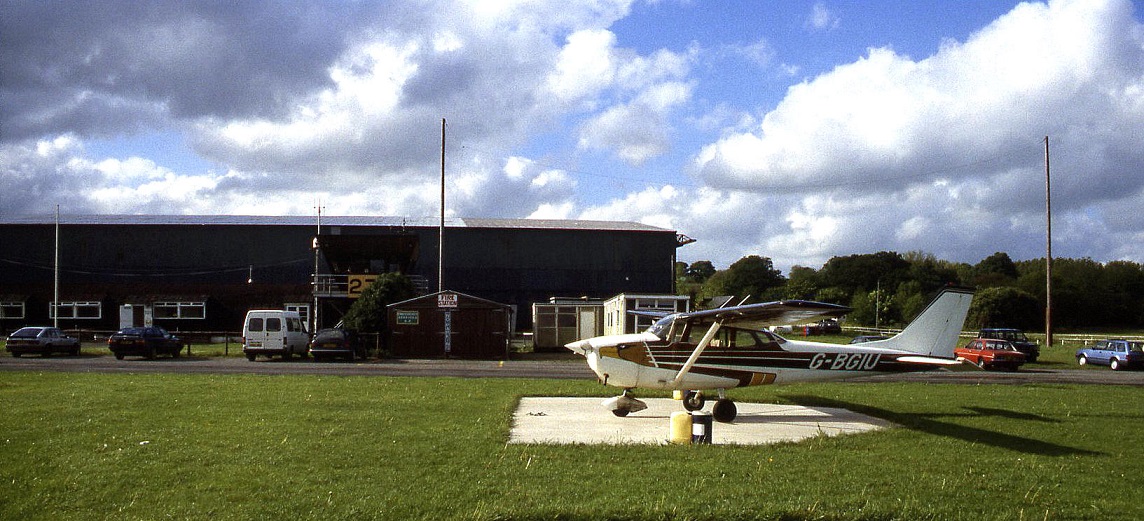Shobdon
SHOBDON: Military aerodrome later civil aerodrome (Originally PEMBRIDGE Landing Ground)
Note: These pictures were obtained from Google Earth ©
Miliary users: WW2: RAF Flying Training Command 23 Group
5 GTS [Glider Training School] (DH Tiger Moths & Miles Masters)
Glider Instructors Flt (Hotspurs)
Operated by: 1960s to 1990s: Herefordshire Aero Club
Then Shobdon Sports & Leisure Ltd for a while?
2000: Herefordshire Aero Club
Flying club/school: Herefordshire Aero Club
Gliding: 1981 Herefordshire Gliding Club
Helicopter ops: Tiger Helicopters
Maintenance: 2001: Herefordshire Aero Club Maintenance
Location: S of B4362, N of Twyford & Broom villages, 5nm WNW of Leominster
Period of operation: Military: 1940 to 1946. Civil from ? to today (Active in 1975)
Note: These maps are reproduced with the kind permission of Pooleys Flight Equipment Ltd. Copyright Robert Pooley 2014.
Runway: WW2: 09/27 1463x46 hard (with 320 grass extension at eastern end)
1965: 09/27 933x46 hard
1990: 09/27 909x18 hard
2000: 09/27 830x18 hard
Note: It is said that there were also two parallel grass runways, but the pictures above only show the microlight strip to the S of 09/27.
2018: Northside of 09/27 hard: 09/27 815x25 grass 09/27 830 hard
Note: The grass runway is not shown as marked in 2014
NOTES: It seems a Fairey Battle of 7 AACU crashed here in September 1940.
GLIDING
Glider flying was of course very important to the war effort and it is fair to say it was only during WW2 that widescale use of large troop and equipment carrying gliders has occurred in aviation history. Even at the end of 1944 SHOBDON had 1350 RAF personnel on station here plus 216 WAAFs.
THE KING'S CUP
On the 21st August 2005 the King’s Cup Air Race was held here being won by Roger Hayes, presumably flying a Beagle Pup? The following year it was held here again on the 13th August, the winner being Nigel Reddish in the Vans RV-7 G-SEVN. After five years at SYWELL (NORTHAMPTONSHIRE) the King’s Cup returned to SHOBDON, the event being held on the 19th August 2012. This time the course of 97 miles was won by Mr Gordon Bellerby flying the Grumman AA-5B Tiger G-BXFW at an average speed of 124.5mph.
The really great aspect of the King’s Cup Air Race is that it is a handicapped race, and has been since 1922 when the first race took place from CROYDON (LONDON), and therefore sheer speed alone does not guarantee a win – the emphasis being on piloting abilities and aircraft preparation.
A BONANZA AT SHOBDON
It appears that this aircraft was well travelled and had spent some time in South Africa.
A PERSONAL MEMORY
In May 1995, Guy Browning and I arranged to take a friend of mine, and his partner, for a weekend away - neither of whom had flown in a light aircraft before. The plan was to fly across from TOP FARM to south west Wales. And, the initial prospects looked good until we landed at WELLESBOURNE MOUNTFORD and reviewed the latest weather forecasts. It wasn't good.
Guy and I decided that SHOBDON was as far as we could go, and made our first visit to this delightful airfield, booking a hotel in Leominster.
The following morning, back at the airfield, Guy suggested that I should take our companions, one at a time seated in the front. Something that I was very happy to do as I was interested to see that my friend from the exhibitions I was involved in, a strapping young man heavily into physical fitness, (running to the venue in Germany for example whilst the rest of us took a tram or taxi), seemed surpringly alarmed at the slightest sign of minor turbulence the day before, whereas his quite slightly built young lady partner was lapping it up.
A LESSON
On my flight with him I suddenly pulled a steep 60º turn pulling a bit of 'G'. He was most alarmed and asked me never to do that again. To which I replied, "That was nothing, this aeroplane can cope with much more than that, so please relax on the way back." Thankfully it worked and at the end he thanked me for a most enjoyable experience.
We'd love to hear from you, so please scroll down to leave a comment!
Leave a comment ...
Copyright (c) UK Airfield Guide
